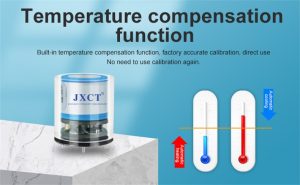Clean air is essential for a healthy environment and sustainable living. However, various industries and activities can release harmful gases into the atmosphere, posing risks to both human health and the ecosystem. To address this issue, gas detectors play a crucial role in environmental monitoring. This article explores the significance of gas detectors in ensuring clean air, their importance in different sectors, advanced features, and future trends in environmental monitoring.
Importance of Environmental Monitoring:
Environmental monitoring involves measuring and assessing the quality of air, water, and soil to identify potential pollutants and ensure compliance with environmental regulations. Air pollution, caused by emissions from industries, vehicles, and other sources, has become a global concern. Accurate and timely monitoring of air quality is essential for identifying pollutant sources, implementing effective mitigation measures, and protecting public health.
Role of Gas Detectors in Environmental Monitoring:
Gas detectors are instrumental in environmental monitoring as they can detect and measure various gases, including both harmful pollutants and naturally occurring gases. They help identify the presence of contaminants and enable authorities to take appropriate actions to mitigate pollution sources. Gas detectors are widely used in different sectors, including industrial operations, transportation, agriculture, and residential areas.
Applications of Gas Detectors in Environmental Monitoring:
a. Industrial Sector: Gas detectors are extensively employed in industrial settings to monitor emissions from factories, power plants, refineries, and chemical processing facilities. By continuously monitoring and detecting gases such as carbon monoxide (CO), sulfur dioxide (SO2), nitrogen dioxide (NO2), and volatile organic compounds (VOCs), gas detectors alert operators to potential pollution events and enable immediate corrective measures.
b. Transportation Sector: Vehicle emissions are a significant contributor to air pollution. Gas detectors integrated into exhaust systems can monitor emissions and provide real-time data on pollutant levels such as carbon dioxide (CO2), nitrogen oxides (NOx), and particulate matter (PM). This data helps regulatory bodies set emission standards and enforce compliance.
c. Agriculture Sector: Gas detectors are used in agricultural activities to monitor greenhouse gas emissions, such as methane (CH4) and nitrous oxide (N2O), from livestock production, rice cultivation, and fertilizer use. By understanding emission levels, steps can be taken to minimize the environmental impact and improve sustainability.
d. Residential Areas: Gas detectors play a crucial role in residential settings to ensure safe indoor air quality. They detect gases like carbon monoxide, which is a silent but deadly threat. Early detection of CO leaks can potentially save lives and prevent carbon monoxide poisoning incidents.
Advanced Features of Gas Detectors:
a. Real-Time Monitoring: Gas detectors provide real-time data on gas concentrations, allowing for immediate action in case of high pollutant levels. This enables prompt response to mitigate pollution sources and protect public health.
b. Wireless Connectivity: Many modern gas detectors come equipped with wireless connectivity options. This allows for remote monitoring and centralized data collection, enabling environmental agencies to track pollution levels across a region and identify areas requiring intervention.
c. Data Logging and Analysis: Gas detectors with data logging capabilities record gas concentration data over time. Analyzing this data helps identify pollution trends, assess the effectiveness of pollution control measures, and develop targeted strategies for reducing emissions.
d. Integration with Environmental Management Systems: Gas detectors can be integrated with environmental management systems to automate data collection, analysis, and reporting processes. Such integration streamlines environmental monitoring efforts and facilitates efficient decision-making.
e. Portable and Wearable Designs: Advances in technology have resulted in portable and wearable gas detectors that enable personal exposure monitoring. This is particularly beneficial for workers in hazardous industries, ensuring they are aware of their individual exposure levels and enabling companies to implement appropriate safety measures.
Future Trends and Developments:
As technology continues to evolve, new trends and developments in gas detectors are emerging in the field of environmental monitoring:
a. Miniaturization and IoT Integration: Gas detectors are becoming smaller and more compact, making them easier to deploy in various settings. Additionally, integration with Internet of Things (IoT) platforms allows for seamless connectivity, real-time monitoring, and data analytics for improved pollution control measures.
b. Multi-Sensor Arrays: Gas dete
 : +86 155 8830 2704
: +86 155 8830 2704 : jxdziot@gmail.com
: jxdziot@gmail.com
